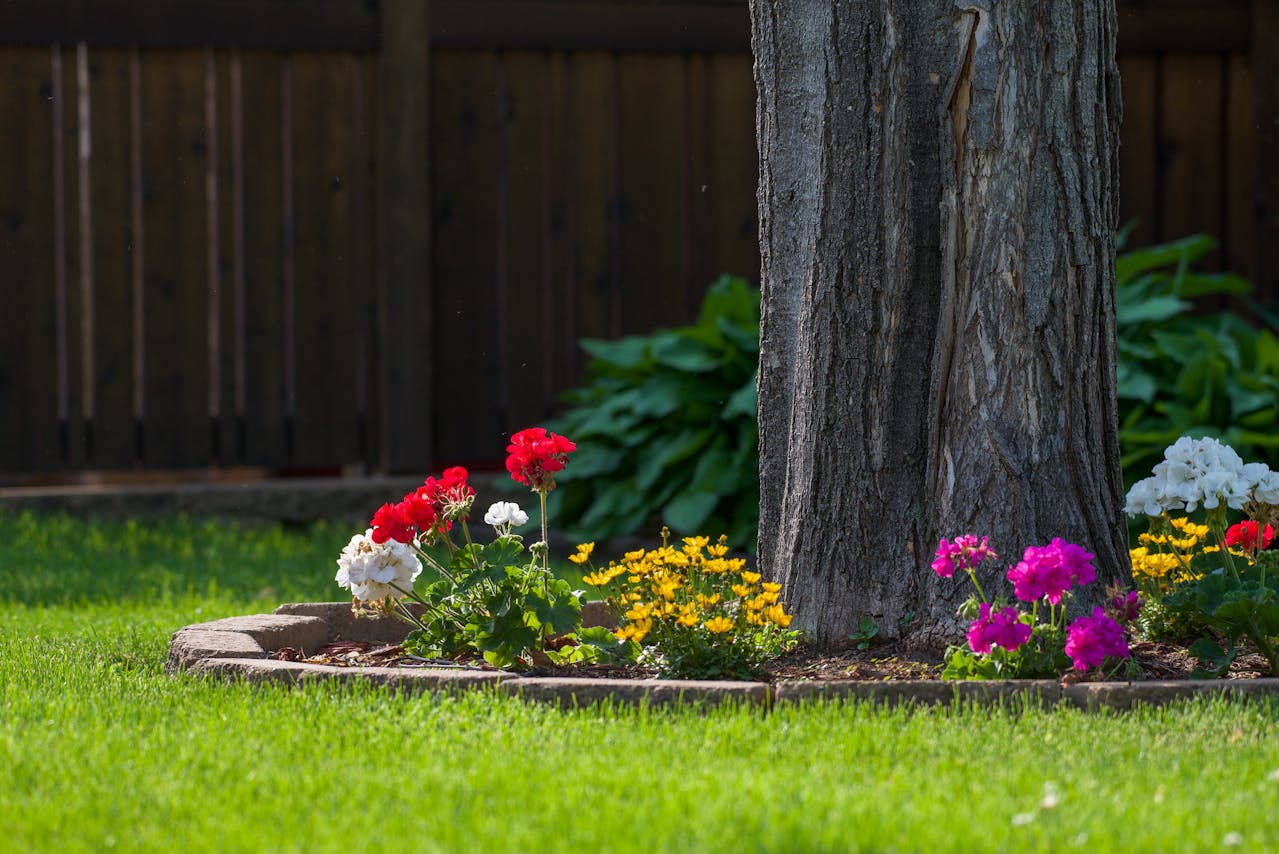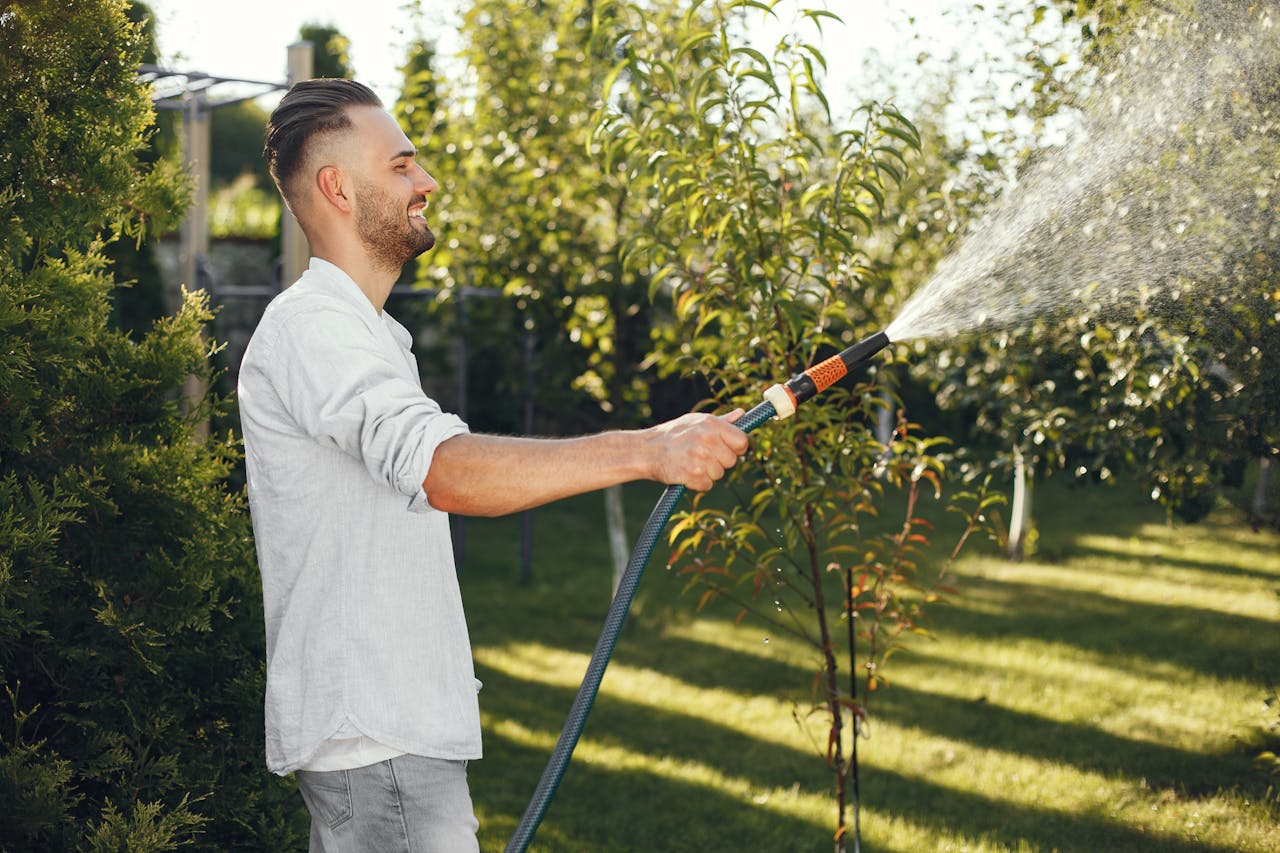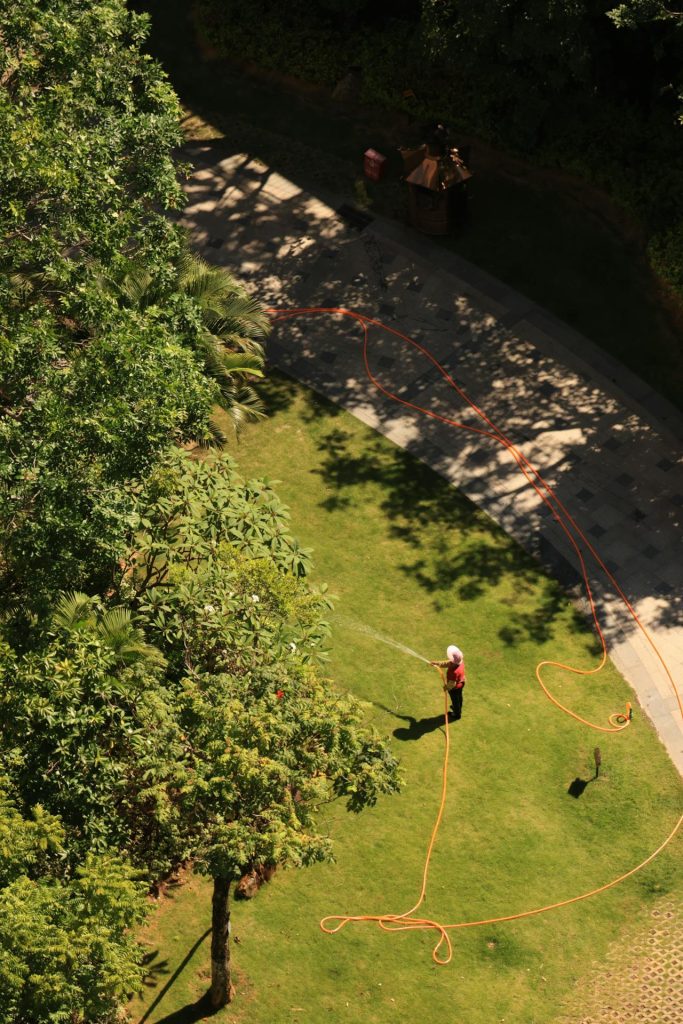Selecting appropriate tree species prevents them from growing too large and creating conflict with the landscape. By considering factors like mature height, canopy spread, and root systems, homeowners and planners can ensure trees fit their environment without causing problems.
Good tree species selection minimizes the chance of roots heaving up sidewalks, branches encroaching on power lines, or trees eventually becoming too big for small residential yards. Native and site-appropriate species tend to be more resilient, needing less maintenance and water while weathering stressors with more confidence.
Choosing the right species for climate, soil type, and available space ensures trees remain healthy and sizes remain manageable. For urban contexts, choosing smaller or slower-growing trees avoids future overcrowding and loss of visibility.
Planning for the present and future yields sustainable landscapes that increase property value and avoid future headaches. Intelligent choices now result in less hassle down the line.
Key Takeaways
- Select native tree species to improve adaptability, disease resistance, and reduce the spread of invasive plant species. This achieves multiple benefits for environmental health and landscape value.
- Select tree species with an understanding of what mature size will be. This prevents you from creating overcrowding, conflicts with buildings, or with power lines.
- To ensure trees are low-maintenance, know each species’ requirements, minimize long-term maintenance, and avoid stress-induced complications.
- Include functional trees that offer shade and encourage native fauna. These trees help prevent soil erosion and make for a more attractive landscape design come 2024.
- Consider what climate and soil conditions you have. Consider your hardiness zone and drainage capabilities to choose tree species that will thrive and remain healthy in your environment.
- Maintain an appropriate distance from utility wires and other structures. Be proactive by periodically monitoring for root growth to prevent future dangers such as damage to your foundation or branch failure from decay.
Importance of Tree Selection
Choosing appropriate tree species is perhaps the most important decision taken when designing sustainable, functional, and beautiful landscapes. In fact, trees are the connective tissue of our ecosystems. Tree canopies play a critical role in regulating temperature, cleaning the air, and increasing biodiversity in both urban and natural ecosystems.
Thoughtful species selection helps guarantee that these benefits are maximized, while avoiding pitfalls often associated with bad planning.
Preventing Oversized Tree Growth
Matching tree species to the available space is key to preventing future problems such as overcrowding or conflict with infrastructure. Trees with broad canopies and vigorous, deep root systems have been known to wreak havoc.
Planted too close to buildings, they may lift foundations or power lines. Understanding a tree’s mature size is a critical step in avoiding these liabilities before they become problematic.
Climate niche analyses help narrow those selections down even more, finding those species best adapted to incoming weather conditions, avoiding over- or under-growth and strain. Steering clear of species with shallow or rapid growth in tight spaces, like silver maples, allows for continued openness and harmony.
Avoiding Long-Term Maintenance Issues
Low-maintenance trees such as oaks or dogwoods minimize the future maintenance burden. Knowing a species’ water, soil, and nutrient requirements is just as critical in order to avoid stressing plants and introducing disease.
Seasonal considerations, including fall leaf drop, prevent a future maintenance headache. By making the research of pest resistance and vulnerabilities a priority, we can provide healthier, longer-lasting trees.
Enhancing Landscape Functionality
Trees can beautify our communities, protect our natural resources, provide shade to urban landscapes, support wildlife, and even prevent soil erosion. Species such as red maples provide comfort with their shade while reinforcing our biodiversity by attracting birds and pollinators.
Trees such as sycamores help stabilize loose soil, and the right species fit into design details of surroundings.
Factors for Choosing the Right Tree
Selecting the right tree species is essential for ensuring healthy growth, harmonious integration with the environment, and minimal future challenges. By considering factors like climate, soil, available space, and tree structure, you can make informed decisions that support long-term success.
Assessing Local Climate Conditions
Knowing your local climate and conditions will lead you to species that will thrive. To begin, collect information about the expected temperature ranges and annual precipitation. Tools such as climate niche models can forecast how species will evolve to meet new conditions in the future.
USDA hardiness zones play a key role in picking the right trees. For example, you should plant Sugar Maples if you live in zone 4-8. Keeping an eye on rainfall and seasonal temperature changes means we can keep trees such as Red Oaks, which do best with regular moisture, thriving.
Understanding Soil Requirements
Determining soil pH and nutrients is essential. Almost any tree will thrive in a neutral to slightly acidic soil, that is, around pH 6-7. Drainage is important as well. Some species, like Bald Cypress, thrive in swampy conditions while others like Eastern Red Cedar prefer drier, well-drained soils.
Compacted soil limits how far roots can go. Don’t use it for species like Dogwoods, which prefer loose soil to allow for proper root growth.
Considering Space and Growth Potential
Measuring your available space can help ensure you avoid overcrowding. For example, Redwoods require a lot of vertical space, while smaller alternatives such as Japanese Maples fit in more confined spaces.
By analyzing mature tree sizes, we can avoid structures, such as foundations or powerlines, from being impacted. Horizontal spread is a consideration, particularly for species like our majestic Live Oaks.
Evaluating Tree Form and Structure
Tree form impacts your design in many functional areas as well as aesthetic areas. Species with more symmetrical shapes, such as Ginkgos, provide options for more formal landscapes while those with more irregular forms, such as Mesquites, lend themselves to naturalistic designs.
Canopy density, like the filtered light leaves of Honey Locusts, creates a balance between shade and sun. Choosing strong trees, such as Sycamores, avoids storm destruction.
Balancing Native and Non-Native Species
Native trees, like American Elms, support ecosystems and adapt well to local conditions. Non-native species, such as the Japanese Zelkova, can add diversity but should be non-invasive.
A mix of both offers balance, but it’s crucial to evaluate ecological impacts to avoid harming biodiversity.
Planning for Future Tree Growth
Taking into account how a tree will mature when planning tree planting projects will help avoid headaches down the road, saving time, money, and effort. A tree’s size, root system, and longevity can have dramatic impacts on its surroundings. So it’s very important to make the right selection.
Predicting Mature Tree Size
Planning for a tree’s long-term growth is paramount. Learning the eventual height and spread of a species aids in making sure that tree will fit into its planting site. A red oak can reach a height of 60 to 75 feet. It grows just as wide, so it requires a lot of room to flourish.
Reliable predictions for future growth can be made using growth charts and historical data. Real outcomes can be heavily affected by environmental factors like soil quality and sunlight exposure. Correct spacing prevents trees from competing with one another and protects against the risk of trees running into adjacent buildings, sidewalks, or fences.
Accounting for Root Expansion
Roots are often the most overlooked aspect of trees, yet they are heavily important. Some species, such as silver maples, have highly aggressive root systems that can destroy building foundations or underground utilities.
Planting site should consider space for the root zone, often 1.5 to 3 times the width of the tree’s canopy. Urban soils, which tend to be compacted, low in organic matter, and salt-stressed, often need strategies such as soil amendments or other treatments to encourage healthy roots.
Proper watering, including monitoring drainage and not overwatering, promotes healthy root systems.
Identifying Potential Hazards
Risks can be avoided through careful tree placement and species choice. Falling branches, particularly over busy sidewalks or streets, create serious hazards to public safety.
Species that are more susceptible to insects, such as the emerald ash borers that have devastated ash trees, might need special attention. Urban trees located under power lines or next to commercial buildings may need to grow in a more restricted manner.
Routine pruning and inspection not only minimize potential hazards, but enhance a tree’s overall health and structural integrity.
Selecting Trees for Longevity
Durability means trees will serve their purpose for many decades. Species such as live oaks, which are highly resilient with lifespans of over 200 years, provide benefits for the long haul.
Determining the best fit for local conditions and anticipated climate changes is key. Trees with inherent disease resistance, like the American holly, not only have lower maintenance requirements but succeed in tough settings.
Incorporating Diversity in Planting
Bringing in more diversity only further strengthens our landscapes. Diversity protects against pests and diseases that spread quickly through monocultures.
A mix of sizes, shapes and seasonal attributes provides year-round character while nourishing urban wildlife. Consider, for instance, that flowering dogwoods offer stunning spring blooms, and sugar maples can throw off a fiery display of color in autumn.
Ideal Planting Locations
When it comes to choosing tree species, knowledge of ideal planting locations can help to prevent creating new issues down the road. An ideal site to begin with makes it easier for trees to have their needs met without being disruptive or creating future hazards. Here are some key things to look for when determining the best planting locations.
Avoiding Crowded Areas
Excessive congestion of trees can create resource competition, inhibiting growth and compromising their health. Start by evaluating your space for enough room, considering the fully grown size of each species. For instance, larger trees such as oaks need more space than smaller varieties such as dogwoods.
Consider a planting plan that prevents canopies and roots from other trees from interfering, giving each tree ample space to soak up sunshine and nutrients. For mature trees and other vegetation, look for clearings that won’t throw the ecosystem out of whack.
Spacing directions, like spacing 20 to 30 feet between mature large trees, allow room for proper growth.
Maintaining Distance from Utility Lines
When utility lines aren’t considered, they can create costly, hazardous conflicts. You should always identify both overhead and underground lines before planting. Select species that will not grow tall enough to reach power lines.
For species like crabapples and redbuds, they remain under 25 feet. Specify a horizontal distance of 10 feet from existing utilities to give trees room to grow. Be sure to look at your locality’s regulations to make sure you’re meeting all requirements.
Protecting Nearby Structures
Trees planted too close to buildings can destroy foundations or roofs. Always measure distances and plan your space thoughtfully. Small trees should be planted with at least 15 feet of clearance from structures and larger species will often need 20 to 30 feet.
Choose species with non-invasive root systems, such as Japanese maples, to minimize damage. Ensure enough distance between trees and installations so that no one can be hurt by a downed branch.
Safeguarding against falling limbs and assuring tree health through regular inspection protects the safety of nearby properties.
Ensuring Proper Sunlight Exposure
Sunlight is vital for healthy tree growth. Evaluate the site for daily light conditions, noting areas with full sun or partial shade. Choose species that match these requirements.
For instance, maples thrive in full sunlight, while flowering dogwoods prefer partial shade. Consider seasonal changes, such as shifting sunlight angles, when planning placements. Trim surrounding vegetation if necessary to prevent shading of young trees.

Techniques for Successful Planting
Choosing the right tree species is only one step in designing a more sustainable landscape. Appropriate planting techniques set trees up for success, reducing the likelihood of future problems such as stunted growth or structural instability. Soil preparation, enhancing soil organic matter, drainage needs, and watering plans are key practices to ensure long-term success.
Preparing Soil for Planting
Healthy soil gives our trees the best chance to live long and healthy lives. Start with a soil test to determine pH levels and any nutrient deficiencies. This will help you know if you need to add amendments such as lime or sulfur.
Loosening that compacted soil is just as important, as it helps roots grow deeper and reach water much faster. Incorporating organic amendments, like a good well-aged compost, increases soil structure and fertility.
When you’re digging your planting holes, dig them 2x as wide as the root ball. Additionally, make sure the holes are deep enough to avoid overcrowding the roots, which can stunt development.
Improving Organic Matter Content
Increasing organic matter improves soil health in the long run. Incorporating compost or aged manure delivers necessary nutrients to the plants, while increasing the soil’s ability to retain water.
Microbial activity is crucial for breaking down organic materials, releasing nutrients back into the soil. Planting cover crops—consider clover or rye—between tree rows is a time- and cost-efficient way to naturally replenish soil structure.
Schedule routine soil health checks to maintain uniform growing conditions.
Checking Drainage Options
So, with the threat of root rotting waterlogging of the roots, it is important to test drainage from the get-go. Do basic tests, like see how fast a small dug hole fills with water, to find out how well your soil holds water.
In flood-prone areas, choose species such as bald cypress, which do well in wet environments. On persistently waterlogged sites, trenches or swales can help direct water away.
Being aware of drainage patterns can keep trees from becoming unstable during heavy rains.
Watering and Mulching Guidelines
A consistent watering schedule is essential to successful establishment for young trees. Going deep fosters a more robust root system, especially in the critical first three years.
Mulching with 2–4 inches of organic material helps conserve moisture and reduce weed competition. Seasonal modifications to watering help keep the plant from suffering from drought stress or overwatering.
Consider using a handheld meter to test soil moisture. In this manner, you can be sure trees are getting the right amount of water based on their stage of growth.
Benefits of Strategic Tree Selection
Choosing appropriate, resilient tree species can make all the difference between long-term success and short-term failure of landscaping projects. Fostering beauty goes beyond immediate aesthetic value; selecting trees with thoughtfulness addresses practical concerns of environmental benefits and support for local ecosystems. Taking a closer look at these benefits shows how easy it is to make more intelligent and environmentally sustainable choices.
Reducing Maintenance Costs
Selecting low-maintenance tree species reduces maintenance needs and costs. Trees that are selected based on their mature size and habit make it easier to create a landscape that doesn’t require regular and intensive pruning. Additionally, hardy species such as red maples or bur oaks are less prone to pests and diseases, decreasing the need for costly treatment.
More efficient irrigation systems, like drip irrigation, use less water and provide moisture right at the root zone. With consistent health monitoring, issues can be identified quickly and addressed, saving expensive treatments down the line.
Improving Environmental Health
Other trees help clean the air around them by absorbing pollutants, like the American sycamore, one of the best filter trees that remove toxins from the air. Other species, such as willows, improve soil health by enhancing organic matter through leaf litter.
Biodiverse trees strategically planted promote biodiversity by creating a network of microhabitats that support various insects, birds, and small mammals. Native species such as pines and oaks are important in helping trees sequester carbon, absorbing greenhouse gases and helping to ensure a stable climate.
Enhancing Aesthetic Appeal
Tree species with seasonal interest, like dogwoods with spring blooms or sugar maples with vibrant fall foliage, create dynamic landscapes. Mixing heights and forms, from lofty evergreens to rounded ornamentals, brings a sense of dimension and character.
Flowering trees, including magnolias, draw us in with seasonal beauty and attract pollinators, including bees and butterflies. An appropriate place, such as the entrance of a home lined with stately elms, offers beauty and focus to the eye and environment.
Supporting Local Wildlife
Native trees, like white oaks or serviceberries, provide food and shelter for wildlife. Planting a complex of tree species and structures, including conifers for winter cover, creates the best habitats.
Offering year-round resources, such as acorns in the fall and berries in the winter, nourishes local fauna through every season. Monitoring ensures that new tree planting initiatives support the growth of wildlife populations, creating a thriving, diverse ecosystem.
Conclusion
Selecting appropriate tree species is essential to avoid issues with tree sizes and prevent future headaches. At JC Tree Service, we emphasize the importance of matching the tree’s mature size to the available space and considering its growth patterns. This ensures the tree thrives in its environment, reducing the risk of root damage, overcrowding, or blocked views. Thoughtful planning minimizes future conflicts and maintenance demands, allowing your trees to grow strong, safe, and beautiful for decades.
Intelligent species selection is key to preventing unsightly overgrowth and costly maintenance. By choosing the right tree for the right space, you save time, effort, and money while enhancing your landscape’s beauty and vitality. At JC Tree Service, we guide you through the selection process, ensuring your trees thrive and your property flourishes. Planting wisely today leads to long-term rewards for both your home and the environment, providing lasting benefits for years to come.
Frequently Asked Questions
1. Why is tree species selection important?
Selecting tree species that will thrive avoids oversized trees, prevents the need for future pruning and other maintenance concerns. Beyond that, it creates a positive approach to healthy ecosystems and increases property value.
2. What factors should I consider when selecting a tree?
Look at size at maturity, growth rate, climate adaptability, soil requirements, intended uses (shade, privacy, ornament), and so on. A tree that is properly matched doesn’t require a lot of babysitting.
3. How can tree selection prevent unsuitable sizes?
By selecting species with mature size in mind, you avoid planting trees that outgrow their space, preventing property damage, pruning headaches, and safety risks.
4. What is the best way to plan for future tree growth?
Consider the tree’s ultimate height and width. Allow for enough distance from buildings, electrical wires, or other trees to avoid future conflict as it matures.
5. Where should I plant trees to avoid future problems?
Select planting sites with enough room, adequate sun exposure, and well-drained soil. Don’t plant trees too close to foundations, driveways, or other underground utilities.
6. Are there techniques to ensure successful tree planting?
Yes! So plant at the proper depth, water regularly, and consider using mulch to help keep moisture in the soil. With regular monitoring and care, trees can thrive for generations to come.
7. What are the benefits of strategic tree selection?
With smarter tree selection, future maintenance costs are halved and property looks much more attractive. It improves livability by providing environmental benefits, including cleaner air and cooler temperatures.
Enhance Your Landscape with JC Tree Service’s Expert Tree Maintenance
Proper tree maintenance is essential for keeping your property safe, beautiful, and well-cared-for. At JC Tree Service, we specialize in comprehensive tree maintenance services for homes and businesses in Brentwood, Antioch, and surrounding areas. Whether you need seasonal pruning, risk assessment, or help managing overgrown branches, our skilled team is here to ensure your trees stay healthy and safe year-round.
Our tree maintenance services are designed to prevent potential hazards, protect your property, and enhance curb appeal. With regular maintenance, we help you avoid risks from weak or damaged branches, manage tree growth, and support long-term health for a vibrant landscape. JC Tree Service focuses on eco-friendly practices, delivering solutions tailored to your needs while keeping your landscape organized and manageable.
Don’t let neglected trees jeopardize your property’s safety and beauty. Contact JC Tree Service today for a free, no-obligation quote on our professional tree maintenance services. Discover how expert care can transform your outdoor space!
Disclaimer
The materials available on this website are for informational and entertainment purposes only and not to provide legal or professional advice. You should contact your attorney or home improvement specialist to obtain advice concerning any particular issue or problem. You should not act or refrain from acting based on any content included in this site without seeking legal or other professional advice. The information presented on this website may not reflect the most current home improvement developments. No action should be taken in reliance on the information on this website. We disclaim all liability concerning actions taken or not taken based on any or all of the contents of this site to the fullest extent permitted by law.




















